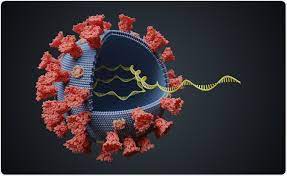What Is Gain-Of-Function Research?

The term ‘gain of function research’ has recently cropped up in the debate about the origins of the Covid-19 pandemic.
- ‘Gain of function’ is a field of research focused on growing generations of microorganisms, under conditions that cause mutations in a virus.
- These experiments are termed ‘gain of function’ because they involve manipulating pathogens in a way that they gain an advantage in or through a function, such as increased transmissibility.
- Such experiments allow scientists to better predict emerging infectious diseases, and to develop vaccines and therapeutics.
- Gain of function research may use genetic engineering or serial passaging.
- Genetic engineering involves ‘editing’ the genetic code to modify the virus in a way predetermined by the scientists.
- Serial passaging involves allowing the pathogen to grow under different circumstances and then observing the changes.
- Gain-of-function research involves manipulations that make certain pathogenic microbes more deadly or more transmissible.
- There is also ‘loss-of-function’ research, which involves inactivating mutations, resulting in a significant loss of original function, or no function to the pathogen.
- Gain-of-function research reportedly carries inherent biosafety and biosecurity risks and is thus referred to as ‘dual-use research of concern’ (DURC).
- Serial passaging involves allowing the pathogen to grow under different circumstances and then observing the changes.
- The discussion around gain of function research came back to focus recently, after a report argued that the possibility of the virus accidentally leaking out of the Wuhan Institute of Virology could not be entirely dismissed.
- While scientists had earlier ruled out the possibility of the virus being ‘genetically engineered’, a recent report said serial passaging may have led to the evolution of the virus during an ongoing gain of function research project in the Chinese city.




